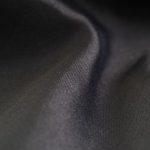You might think Scotchgard makes your fabrics completely stain-proof or that a single application lasts forever, but those ideas are far from the truth. Many people assume it's a one-size-fits-all solution, yet the reality is much more nuanced. Understanding these common myths can save you time and money, especially if you want to protect your upholstery or carpets effectively. Curious about what's real and what's not? Let's explore the facts surrounding Scotchgard and how you can make the most of its protective qualities.
Table of Contents
Key Takeaways
- Scotchgard does not provide complete protection; quick action against spills is necessary to prevent stains from setting in.
- One application is not permanent; reapplication is needed as protection diminishes over time due to wear and cleaning.
- Effectiveness varies by fabric type; not all materials respond the same way to Scotchgard treatment.
- Scotchgard is safe for many fabrics, but delicate materials like silk and leather require caution and testing first.
Scotchgard Makes Fabrics Stain-Proof
Many people believe Scotchgard makes fabrics completely stain-proof, but that's not the case. While Scotchgard is a powerful protective treatment that helps repel stains and spills, it doesn't guarantee your upholstery will remain untouched by messes. You still need to act quickly when a spill occurs, as the effectiveness of Scotchgard diminishes over time and with heavy use.
When you apply Scotchgard, it creates a barrier on the fabric, which can help prevent stains from setting in. However, it's not a magical shield. For example, substances like oil or certain dyes can still penetrate the treated fabric if left unattended.
It's also important to note that not all fabrics respond equally to Scotchgard. Some materials may require specific treatments for optimal protection.
To keep your fabrics looking their best, regular maintenance is essential. Clean up spills immediately and follow care instructions for your specific fabric type.
While Scotchgard can significantly reduce the risk of stains, it's not foolproof. Understanding its limitations allows you to use it effectively and prolong the life of your fabrics.
Only for Upholstery Use
Many people think Scotchgard is just for upholstery, but that's a myth.
You can use it on a variety of surfaces, including outdoor fabrics, to keep them protected.
This versatility makes it a go-to choice for anyone looking to safeguard their belongings.
Versatile Application Options
When it comes to upholstery, Scotchgard offers a range of versatile application options tailored to meet your specific needs. You can choose from spray-on formulas that allow for easy, targeted coverage, ensuring you hit all the nooks and crannies of your furniture. This method is particularly beneficial for larger pieces, like sofas and chairs, where applying evenly can be tricky.
If you prefer a more hands-on approach, you can also use a cloth or sponge to apply Scotchgard. This method allows for greater control, helping you focus on areas that might need extra protection. No matter how you apply it, the key is to ensure a thorough, even coat for optimal results.
After application, Scotchgard dries clear and won't alter the look or feel of your upholstery, so you won't have to worry about any unsightly residue. Plus, it's quick-drying, allowing you to enjoy your freshly protected furniture sooner rather than later.
With these versatile options, you can easily customize your Scotchgard experience to suit your needs and keep your upholstery looking its best.
Protects Various Surfaces
Scotchgard effectively protects various upholstery surfaces, ensuring they remain clean and stain-resistant for longer. You might think that Scotchgard is only for carpets, but it's actually designed for a wide range of upholstery materials, including sofas, chairs, and cushions. By applying Scotchgard, you create a protective barrier that repels spills and dirt, making it easier to clean.
When you treat your upholstery with Scotchgard, you're not just protecting against everyday messes. It also helps prevent stains from setting in, which can prolong the life of your furniture. Whether you've got kids, pets, or just love entertaining, Scotchgard gives you peace of mind.
It's essential to remember that Scotchgard isn't a magic solution. While it does offer impressive protection, it doesn't make your upholstery invincible. Regular maintenance and cleaning still play a crucial role in keeping your furniture looking its best.
Ideal for Outdoor Fabrics
Outdoor fabrics can greatly benefit from Scotchgard's protective qualities, ensuring they resist stains and weather-related damage. While it's a popular misconception that Scotchgard is only suitable for indoor upholstery, it can effectively enhance the longevity of your outdoor furnishings too. You'll appreciate how it repels spills and prevents dirt from embedding into the fabric, making maintenance easier.
Here's a quick overview of how Scotchgard works for different outdoor fabrics:
| Fabric Type | Benefit |
|---|---|
| Canvas | Resists water and mildew |
| Polyester | Blocks UV rays, preventing fading |
| Acrylic | Protects against stains |
| Nylon | Enhances durability |
| Sunbrella | Maintains color vibrancy |
One Application Lasts Forever
You might think one application of Scotchgard protects your items forever, but that's not the case.
Over time, factors like wear and environmental conditions can reduce its effectiveness.
It's a good idea to reapply it periodically to maintain that protective barrier.
Durability Over Time
Many people believe that one application of Scotchgard provides permanent protection, but that's far from the truth. In reality, the effectiveness of Scotchgard diminishes over time due to regular wear and tear, cleaning, and exposure to various elements. While it does create a protective barrier against spills and stains, this barrier isn't invincible.
You might think you can apply Scotchgard once and forget about it, but that's not the best approach. For optimal protection, you should reapply Scotchgard to your fabrics and upholstery periodically, especially after deep cleaning or heavy use. The frequency of reapplication depends on how often you use the item and the level of exposure it faces.
It's also important to note that different fabrics have varying levels of durability when treated with Scotchgard. Some materials may require more frequent applications than others, so it's wise to assess your items regularly.
Environmental Factors Impact
Environmental factors like sunlight, humidity, and temperature fluctuations can significantly affect the longevity of Scotchgard's protective barrier.
When you apply Scotchgard, you might think it'll keep your fabrics safe forever, but that's not the case. Direct sunlight can break down the protective compounds in Scotchgard, causing it to wear off faster than expected. Similarly, high humidity can lead to mold and mildew, which can compromise the treatment's effectiveness.
Temperature fluctuations also play a role. Extreme heat can cause the material to expand, while cold can cause it to contract. These changes can weaken the bond Scotchgard has with the fabric, reducing its protective capabilities. If you live in an area with drastic weather changes, you may notice decreased performance more quickly than in milder climates.
In short, while Scotchgard offers valuable protection, it doesn't last indefinitely. It's essential to consider your environment when evaluating its effectiveness. By understanding these factors, you can better manage your expectations and maintain the integrity of your treated items.
Reapplication Recommendations
One application of Scotchgard doesn't last forever, and regular reapplication is necessary to maintain optimal protection for your fabrics. While Scotchgard does provide a robust barrier against stains and spills, its effectiveness diminishes over time due to factors like wear and exposure to cleaning products.
To help you keep track of when to reapply, here's a simple guide:
| Fabric Type | Reapplication Frequency |
|---|---|
| Upholstery | Every 1-2 years |
| Outdoor Fabrics | Every 1 year |
| Carpets | Every 6-12 months |
| Clothing | After every wash |
It Changes Fabric Texture
Applying Scotchgard doesn't alter the feel of your fabric; it maintains its original texture while providing a protective barrier. You might worry that applying this treatment will leave your upholstery feeling stiff or unnatural, but that's just a myth. The product works by bonding with the fibers, creating a shield against spills and stains without compromising the softness or pliability you love.
Here are a few reasons why Scotchgard won't change your fabric's texture:
- Invisible Protection: Scotchgard is designed to be absorbed into the fibers, so you won't see or feel any residue.
- Breathability: The treatment allows your fabric to breathe, preserving its comfort and natural feel.
Safe for All Materials
Scotchgard is generally safe for a wide range of materials, including upholstery, carpets, and even clothing. Many people worry that using Scotchgard could damage their belongings, but that's a common myth.
In reality, Scotchgard works effectively to repel stains and spills without compromising the integrity of the fabric. If you're concerned about how it might react with specific materials, it's always a good idea to test a small, inconspicuous area first.
When applied correctly, Scotchgard retains the original look and feel of your items. You won't have to worry about discoloration or any negative effects on the texture. It's designed to provide a protective barrier while allowing your fabrics to breathe.
However, keep in mind that while Scotchgard is safe for most materials, it mightn't be suitable for all. Certain delicate fabrics, like silk or leather, can react differently. Always check the manufacturer's recommendations before applying.
Requires Professional Application
You might think that applying Scotchgard requires a professional, but that's not the case for most situations. In fact, many homeowners can easily apply it themselves, saving time and money. Scotchgard comes in user-friendly spray cans, making it simple for you to treat your furniture, carpets, and other fabrics without needing specialized skills.
Here are some reasons why DIY application is feasible:
- Simple Instructions: Scotchgard products typically come with clear guidelines, allowing you to follow them easily.
- Quick Drying Time: Most applications dry quickly, meaning you won't have to wait long before using your items again.
Just ensure you're in a well-ventilated area and test a small patch first to check for any reactions.
With a little care and attention, you can effectively protect your belongings without needing to call in the pros. So, grab a can of Scotchgard and get started on safeguarding your items today!
It's a One-Size-Fits-All Solution
Is it really true that Scotchgard works the same on all fabrics and surfaces? The answer is a resounding no. Scotchgard isn't a one-size-fits-all solution. Different materials require different approaches to protection.
For instance, while it can effectively repel stains on synthetic fabrics, it mightn't perform the same way on delicate materials like silk or leather. Applying Scotchgard to the wrong surface can even damage the fabric.
Before you spray, it's crucial to check the manufacturer's guidelines for both the fabric and the Scotchgard product. Some formulations are specifically designed for upholstery, while others are better suited for carpets or outdoor fabrics. If you choose the wrong product, you may not only waste your time but also risk ruining your item.
Additionally, some fabrics may require pre-treatment or additional steps for optimal protection. Always test a small, inconspicuous area first to see how the fabric reacts.
Frequently Asked Questions
Can Scotchgard Be Applied to Outdoor Furniture?
Yes, you can apply Scotchgard to outdoor furniture. It helps repel water and stains, keeping your furniture looking new. Just make sure to follow the application instructions for the best protection and results.
How Often Should I Reapply Scotchgard?
You should reapply Scotchgard every six months to a year, depending on usage and exposure to elements. Regular inspections can help you determine when it's time to refresh the protection for optimal performance.
Does Scotchgard Protect Against Fading From Sunlight?
Scotchgard doesn't specifically protect against fading from sunlight. While it offers stain resistance, you'll still need to consider other protective measures, like UV-blocking window treatments, to keep your fabrics looking vibrant and new.
Is Scotchgard Safe for Pets and Children?
Yes, Scotchgard's generally safe for pets and children once it's fully dried. You should always ventilate the area during application and ensure it's completely absorbed to minimize any potential exposure or irritation for your loved ones.
Can I Use Scotchgard on Leather Materials?
Yes, you can use Scotchgard on leather materials, but make sure to test it on a small, inconspicuous area first. It'll help protect your leather from stains and moisture while keeping it looking good.
- Tetron Fabric for Marine Applications: Durability and Use Cases - June 18, 2025
- Tetron Fabric for Outdoor Furniture: Weather Resistance and Care - June 18, 2025
- Tetron Fabric for Wall Coverings: Style and Application Tips - June 18, 2025







